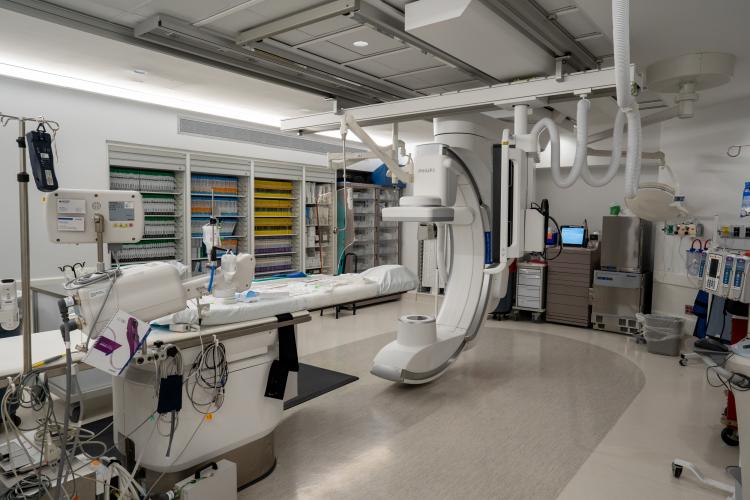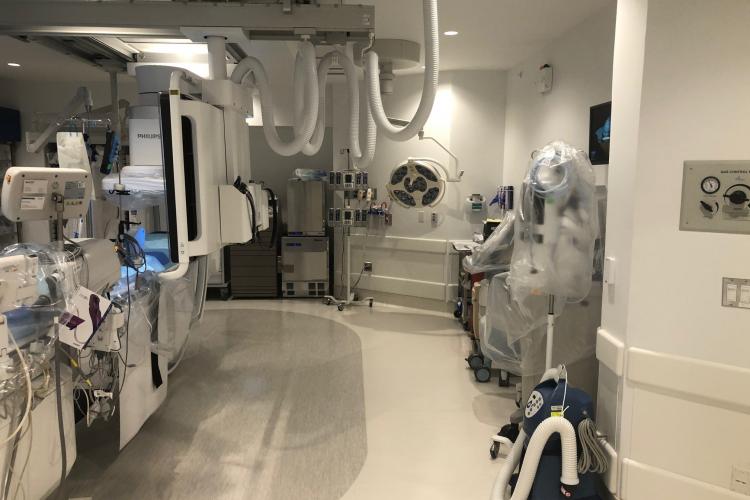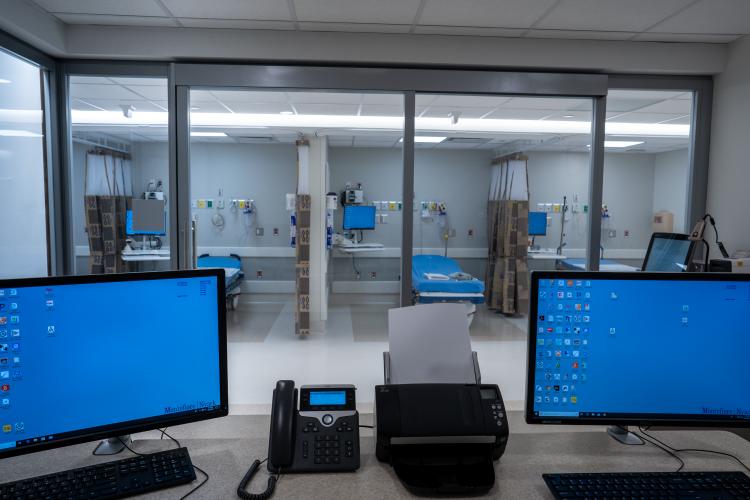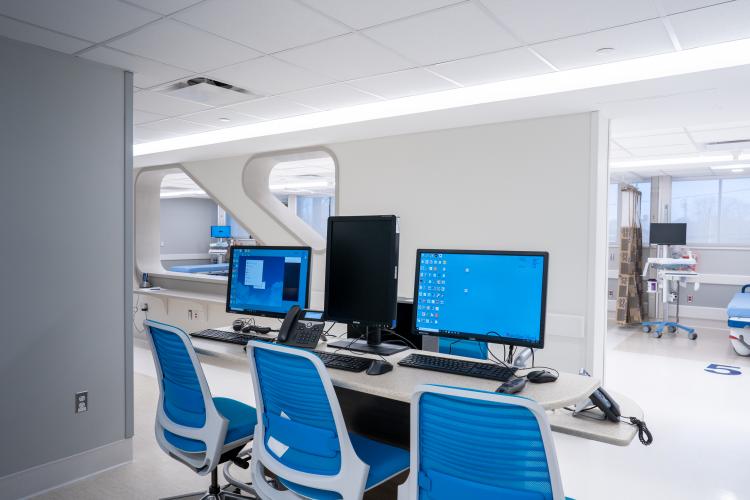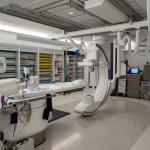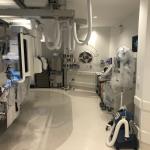A sub-specialty of cardiology, interventional cardiology focuses on the minimally invasive diagnosis and treatment of a broad range of heart conditions.
Interventional cardiologists insert small catheters (thin, hollow tubes) into the blood vessels of the arm, neck or groin. The catheters carry diagnostic or treatment tools into the heart. This procedure, broadly termed cardiac catheterization, gives doctors important information about the heart muscle, heart valves and blood vessels that helps diagnose conditions and diseases. It also allows them to treat a variety of heart conditions, including coronary artery disease, heart valve disease, heart failure, atrial fibrillation, congenital heart conditions and more. In many circumstances, treatment of these conditions in a minimally invasive fashion with a cardiac catheterization is as effective as traditional cardiac surgery with less scarring and a quicker return to normal activities.
At the Interventional Cardiology program at Montefiore Nyack Hospital, board-certified specialists use cardiac catheterization to perform diagnostic tests and provide a variety of treatments, including implanting pacemakers, inserting stents, removing blood clots in the lungs and treating heart blockages. Procedures are performed at our state-of-the-art Cardiac Catheterization Lab, which opened in 2021 and is located close to the Emergency Center so patients can be transported quickly for emergency procedures. For patients whose treatments aren’t amenable to interventional cardiology and who require open heart surgery, we can seamlessly transfer them to our affiliates White Plains Hospital or Montefiore Einstein.
Interventional cardiologists at Montefiore Nyack Hospital perform:
Cardiac Catheterization. Also known as cardiac cath or heart cath, cardiac catheterization is a procedure to examine how well your heart is working. The procedure can help your doctor diagnose and manage heart problems, such as:
- Coronary artery disease
- Heart Valve disease
- Congestive heart failure
- Certain congenital (present at birth) heart conditions
Cardiac catheterization gives your doctor more detailed information than other tests. During the procedure, the doctor inserts a catheter (a think, hollow tube) into a large blood vessel that leas to the heart. The doctor uses X-ray or ultrasound imaging to guide the catheter to the heart. In one procedure, the doctor advances the catheter into the coronary arteries and injects contrast dye. An X-ray called fluoroscopy allows the doctor to see blockages in the arteries as the dye moves through the arteries. In another procedures, the doctor m ay place the tip of the catheter into different parts of the heart to measure the pressures and blood flow inside the heart's chambers. This procedure can tell the doctor how much oxygen is in the blood and provide information about the pumping ability of the heart muscle.
Angioplasty and Stenting. A catheter is inserted into a blood vessel and guided to the heart or other areas of the body. The catheter has a balloon at the tip, which inflates to stretch the artery open and increase blood flow to the heart. A stent (a small metal mesh cylinder) is placed into the vessel to keep it open.
Rotational Atherectomy. A burr or rotary shaver is placed at the tip of the catheter and guided to the affected area to get rid of plaque that has built up in the artery walls. In some cases, a laser catheter is used to vaporize the plaque.
Transcatheter Aortic Valve Replacement (TAVR). This procedure treats patients with severe narrowing of the heart’s aortic valve. A small catheter is used to place a new aortic valve within the damaged valve to regulate blood flow more effectively in the heart.
Thrombectomy. Blood clots can disrupt normal blood flow to a part of the body, causing life-threatening conditions such as a pulmonary embolism or acute stroke. During a thrombectomy, a catheter is inserted into the blood vessel to remove clot(s) and restore blood flow to the affected area.
Valvuloplasty. This procedure is done to open a stiff (stenotic) heart valve. A catheter is inserted into a blood vessel in the groin and guided into the heart. When the catheter reaches the stiff valve, a balloon at the tip of the catheter is inflated until the flaps of the valve are pushed open. Once the valve opens, the balloon is deflated and the catheter removed.
LEARN MORE
- For appointments or more information about the Interventional Cardiology program, call 845-348-2650.
- Find out how doctors in the Cath Lab saved a patient's life when his heart suddenly stopped beating. (Page 10)
- Read how a patient's decision to have a state-of-the-art cardiac procedure led to a healthier heart and and a speedy recovery. (Page 4)
Appointments



 Upcoming Events
Upcoming Events